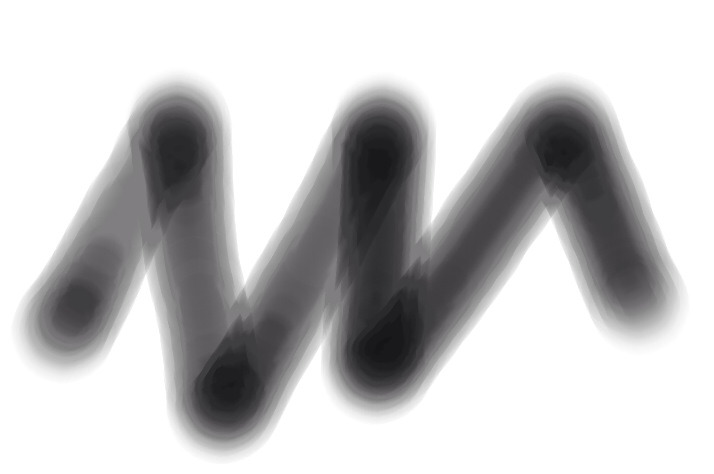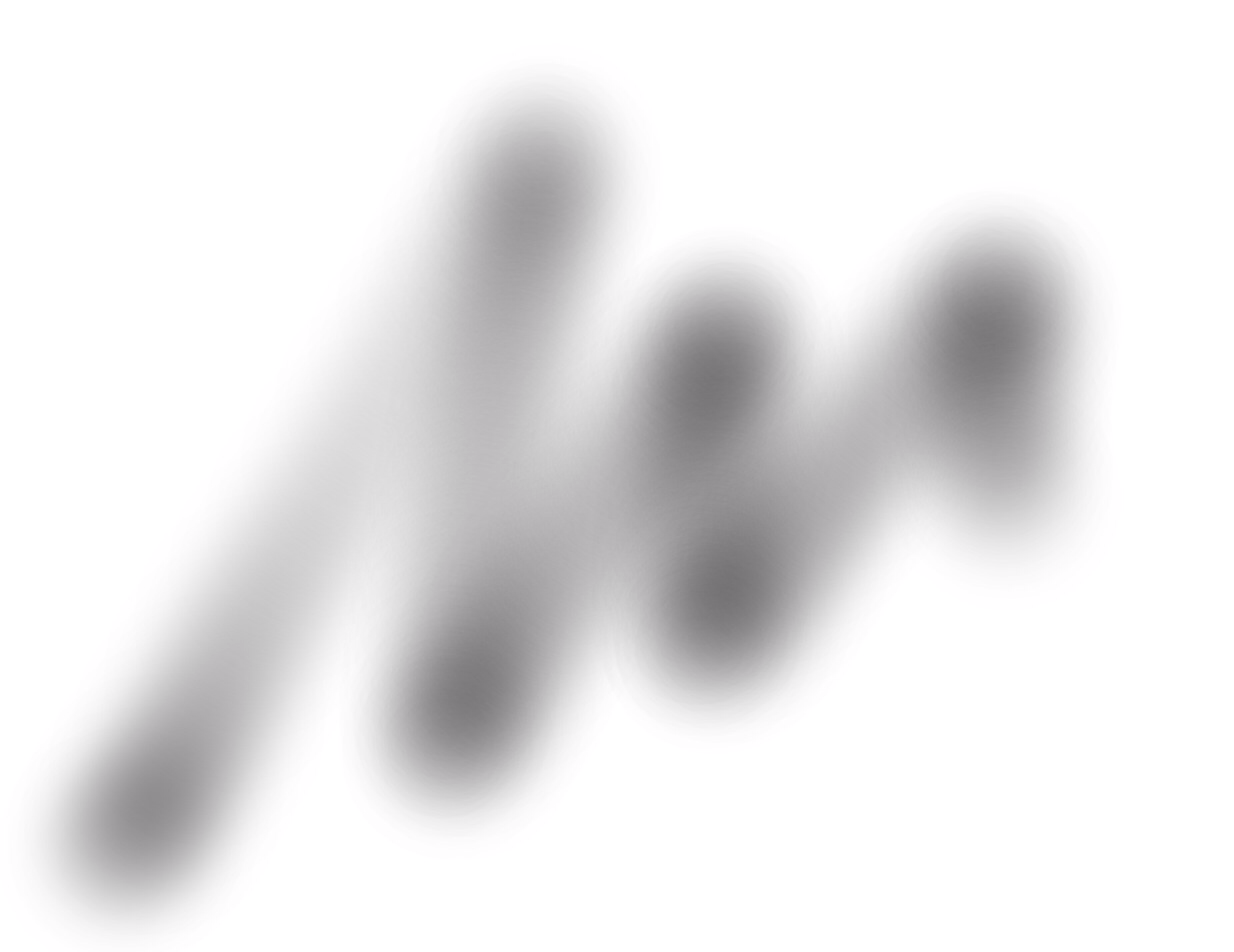我正在开发一个绘图应用程序,我注意到在 32 位 iPad 和 64 位 iPad 上加载的纹理存在显着差异。
这是在 32 位 iPad 上绘制的纹理:

这是在 64 位 iPad 上绘制的纹理:

64 位是我想要的,但似乎丢失了一些数据?
我用这段代码创建了一个默认画笔纹理:
UIGraphicsBeginImageContext(CGSizeMake(64, 64));
CGContextRef defBrushTextureContext = UIGraphicsGetCurrentContext();
UIGraphicsPushContext(defBrushTextureContext);
size_t num_locations = 3;
CGFloat locations[3] = { 0.0, 0.8, 1.0 };
CGFloat components[12] = { 1.0,1.0,1.0, 1.0,
1.0,1.0,1.0, 1.0,
1.0,1.0,1.0, 0.0 };
CGColorSpaceRef myColorspace = CGColorSpaceCreateDeviceRGB();
CGGradientRef myGradient = CGGradientCreateWithColorComponents (myColorspace, components, locations, num_locations);
CGPoint myCentrePoint = CGPointMake(32, 32);
float myRadius = 20;
CGGradientDrawingOptions options = kCGGradientDrawsBeforeStartLocation | kCGGradientDrawsAfterEndLocation;
CGContextDrawRadialGradient (UIGraphicsGetCurrentContext(), myGradient, myCentrePoint,
0, myCentrePoint, myRadius,
options);
CFRelease(myGradient);
CFRelease(myColorspace);
UIGraphicsPopContext();
[self setBrushTexture:UIGraphicsGetImageFromCurrentImageContext()];
UIGraphicsEndImageContext();
然后像这样实际设置画笔纹理:
-(void) setBrushTexture:(UIImage*)brushImage{
// save our current texture.
currentTexture = brushImage;
// first, delete the old texture if needed
if (brushTexture){
glDeleteTextures(1, &brushTexture);
brushTexture = 0;
}
// fetch the cgimage for us to draw into a texture
CGImageRef brushCGImage = brushImage.CGImage;
// Make sure the image exists
if(brushCGImage) {
// Get the width and height of the image
GLint width = CGImageGetWidth(brushCGImage);
GLint height = CGImageGetHeight(brushCGImage);
// Texture dimensions must be a power of 2. If you write an application that allows users to supply an image,
// you'll want to add code that checks the dimensions and takes appropriate action if they are not a power of 2.
// Allocate memory needed for the bitmap context
GLubyte* brushData = (GLubyte *) calloc(width * height * 4, sizeof(GLubyte));
// Use the bitmatp creation function provided by the Core Graphics framework.
CGContextRef brushContext = CGBitmapContextCreate(brushData, width, height, 8, width * 4, CGImageGetColorSpace(brushCGImage), kCGImageAlphaPremultipliedLast);
// After you create the context, you can draw the image to the context.
CGContextDrawImage(brushContext, CGRectMake(0.0, 0.0, (CGFloat)width, (CGFloat)height), brushCGImage);
// You don't need the context at this point, so you need to release it to avoid memory leaks.
CGContextRelease(brushContext);
// Use OpenGL ES to generate a name for the texture.
glGenTextures(1, &brushTexture);
// Bind the texture name.
glBindTexture(GL_TEXTURE_2D, brushTexture);
// Set the texture parameters to use a minifying filter and a linear filer (weighted average)
glTexParameteri(GL_TEXTURE_2D, GL_TEXTURE_MIN_FILTER, GL_LINEAR);
// Specify a 2D texture image, providing the a pointer to the image data in memory
glTexImage2D(GL_TEXTURE_2D, 0, GL_RGBA, width, height, 0, GL_RGBA, GL_UNSIGNED_BYTE, brushData);
// Release the image data; it's no longer needed
free(brushData);
}
}
更新:
我已经将 CGFloats 更新为 GLfloats 但没有成功。也许这个渲染代码有问题?
if(frameBuffer){
// draw the stroke element
[self prepOpenGLStateForFBO:frameBuffer];
[self prepOpenGLBlendModeForColor:element.color];
CheckGLError();
}
// find our screen scale so that we can convert from
// points to pixels
GLfloat scale = self.contentScaleFactor;
// fetch the vertex data from the element
struct Vertex* vertexBuffer = [element generatedVertexArrayWithPreviousElement:previousElement forScale:scale];
glLineWidth(2);
// if the element has any data, then draw it
if(vertexBuffer){
glVertexPointer(2, GL_FLOAT, sizeof(struct Vertex), &vertexBuffer[0].Position[0]);
glColorPointer(4, GL_FLOAT, sizeof(struct Vertex), &vertexBuffer[0].Color[0]);
glTexCoordPointer(2, GL_FLOAT, sizeof(struct Vertex), &vertexBuffer[0].Texture[0]);
glDrawArrays(GL_TRIANGLES, 0, (GLint)[element numberOfSteps] * (GLint)[element numberOfVerticesPerStep]);
CheckGLError();
}
if(frameBuffer){
[self unprepOpenGLState];
}
顶点结构如下:
struct Vertex{
GLfloat Position[2]; // x,y position
GLfloat Color [4]; // rgba color
GLfloat Texture[2]; // x,y texture coord
};
更新:
该问题实际上似乎并非基于 32 位或 64 位,而是 A7 GPU 和 GL 驱动程序有所不同。我通过在 64 位 iPad 上运行 32 位构建和 64 位构建发现了这一点。纹理最终在应用程序的两个版本中看起来完全相同。
最佳答案
我希望你检查两件事。
检查 OpenGL 中的 alpha 混合逻辑(或选项)。
检查与拖动速度成正比的插值逻辑。
看来你没有第二个或者没有效果,这是绘图应用程序所必需的
关于ios - iPad 纹理加载差异(32 位与 64 位),我们在Stack Overflow上找到一个类似的问题: https://stackoverflow.com/questions/21689336/